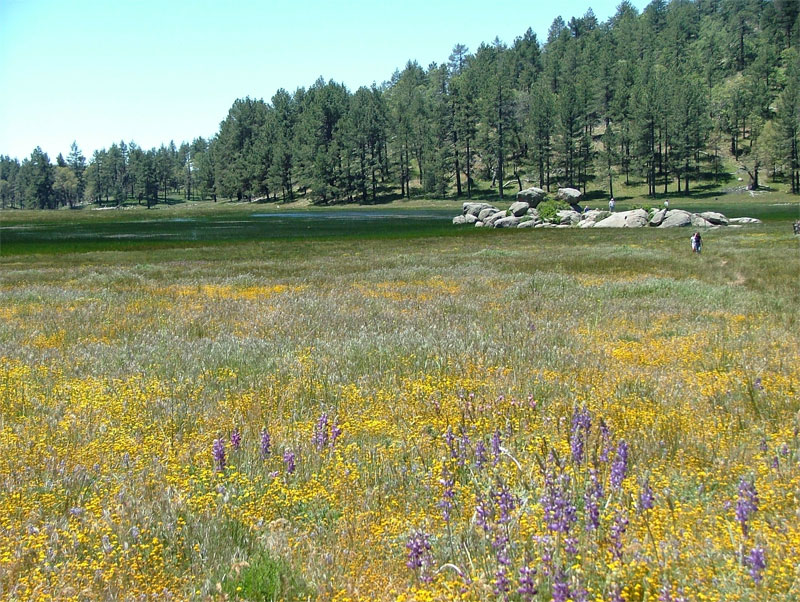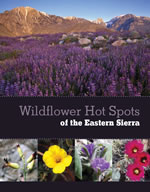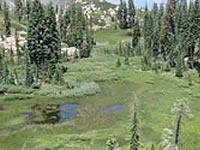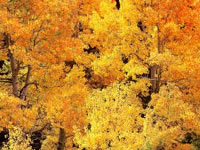Pacific Southwest Region
 Pacific Southwest Region. From “Guide to Your National Forests and Grasslands (PDF)”, 2006.
Pacific Southwest Region. From “Guide to Your National Forests and Grasslands (PDF)”, 2006.
Eighteen national forests in California make up the national forest lands of the Pacific Southwest Region of the U.S. Forest Service. Much of the Region is within the California floristic province, unique in the United States for its Mediterranean climate of dry, hot summers and wet or snowy winters. Many wildflowers of the California national forests grow nowhere else in the world. From ancient rock gardens to sagebrush steppes to squishy mountain fens, California's native plants are spectacular!
Regional Information
Wildflower Hot Spots of the Eastern Sierra (PDF, 4.7 MB) Wildflower Hot Spots of the Eastern Sierra highlights the unique ecology, geology, and unparalleled flora along 150 miles of the Eastern Sierra corridor. Twelve wildflower sites have been selected to represent the diversity of environments that are found throughout the Eastern Sierra. Each site features directions, a map, GPS coordinates, a description of the natural history of the area, and photos. Topics you can learn about include plant rarity, disturbance processes, and the many ways people use plants. "Can You Find…?" proposes a fun challenge for you and your family. For a more in-depth look at the species found at each site, use the plant list featured in the back of this guide. Take the time to stop and smell the flowers in this extraordinary Eastern Sierra region!
Rare Plant Conservation Success Stories
- Seed Banking Tracy’s beardtongue (Penstemon tracyi), Meeting Target 8 of the Global Strategy for Plant Conservation
- Tahoe yellow cress (Rorippa subumbellata Roll.) Recovery on the Lake Tahoe Basin Management Unit
- Who knew? Newly Delimited California Sensitive Plant Gains Protection from Rock Barrier and Informative Sign
Also See…
California Fens
Fens are an important wetland type in the mountains of California. Fens are permanently saturated wetlands, receiving significant water and nutrients from a ground source of water. Ground water fed fens are widespread in the California mountains of the Sierra Nevada, coast range, and southern Cascades.
Fading Gold: The Decline of Aspen in the West
Fading Gold explores the aspen community in the western United States. It describes how aspen grows, the decline of aspen from in the Rocky Mountains to the Sierra Nevada Mountains, and the challenges for aspen in the western landscape. We feature aspen's beautiful fall colors, wildflowers in the aspen community, and the traces left in the aspen groves by past visitors.
Klamath-Siskiyou Serpentines
Formed deep within the earth's mantle, serpentine rocks found their way to the surface over millennia. Unique flora have evolved on serpentine soils, especially adapted to survive severe hardships of drought, heavy metals, and nutrient stress. The Klamath-Siskiyou Mountains of northwest California and southwest Oregon are the largest serpentine area in North America.
Visit “Beauty of It All” for a closer look at the beautiful wildflowers of our national forests and grasslands …
Wildflower Photographs

Drummond's anemone (Anemone drummondii). Lake Tahoe Basin Management Unit (LTBMU). Photo by Steve Matson, 2005.
-
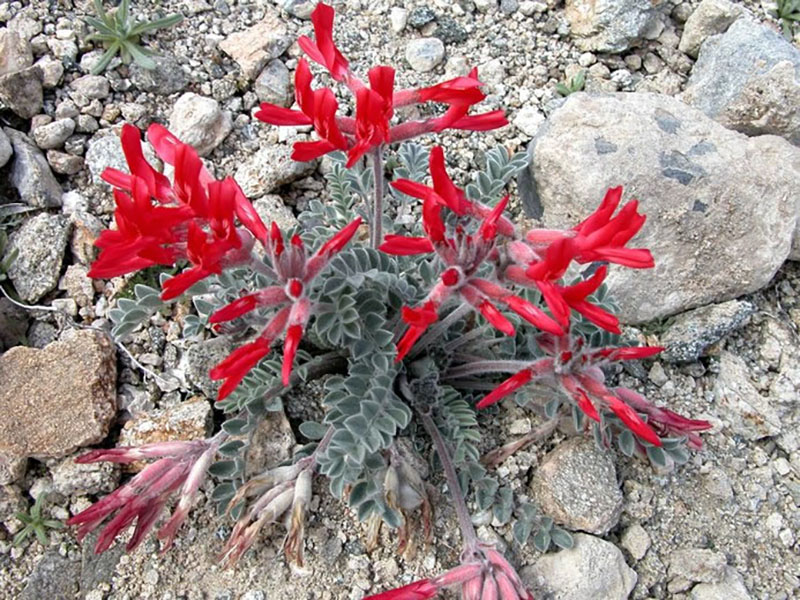
Scarlet milkvetch (Astragalus coccineus). San Bernardino National Forest. Photo by Chris Wagner, 2005.
-

Yellow mariposa (Calochortus luteus). Los Padres National Forest. Photo by Christopher Christie, 2005.
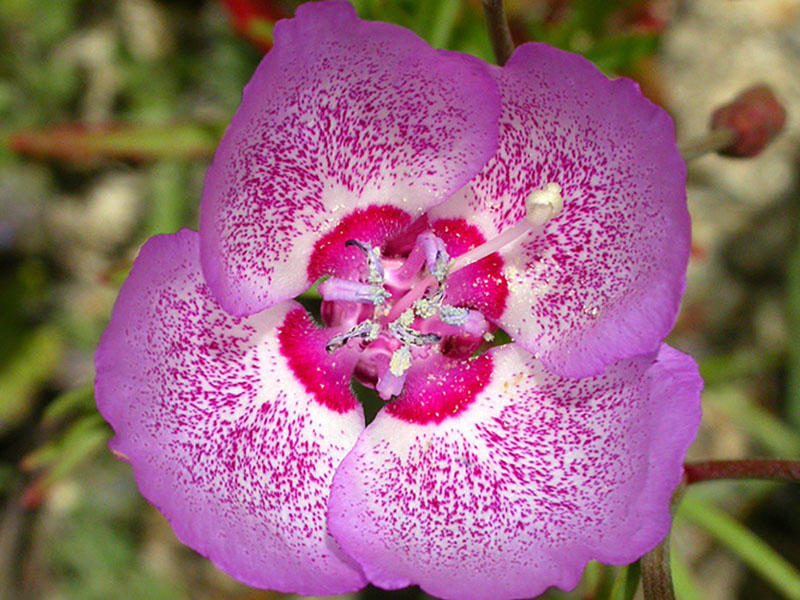
Speckled Clarkia (Clarkia cylindrica). Los Padres National Forest. Photo by Christopher Christie, 2005.

Bach's calicoflower (Downingia bacigalupii). Modoc National Forest. Photo by Gary A. Monroe, 2002.

Sand lily (Leucocrinum montanum). Modoc National Forest. Photo by Cheryl Beyer, 2005.
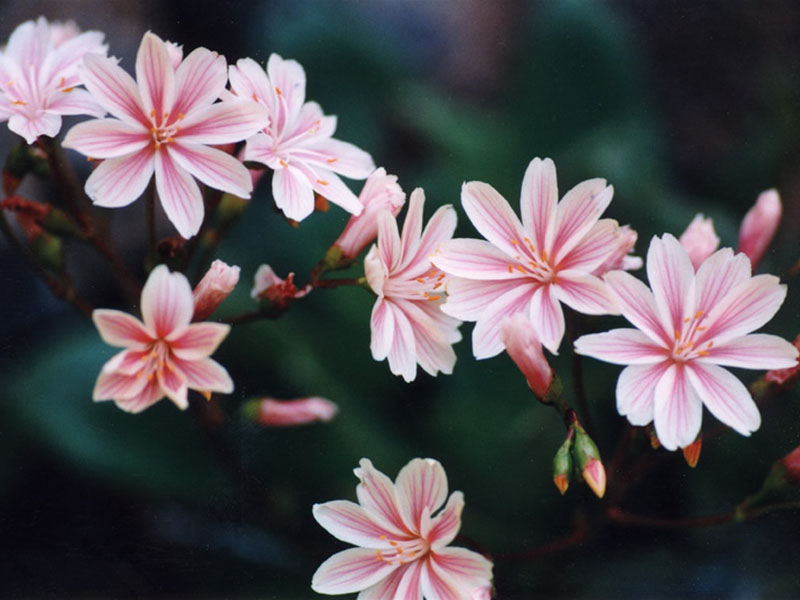
Cliff maids (Lewisia cotyledon). Shasta-Trinity National Forest. Photo by Ken DeCamp, 2006.
-

Tricolor monkeyflower (Mimulus tricolor). Stanislaus National Forest. Photo by Steve Schoenig, 2001.
-

Indian warrior (Pedicularis densiflora). Shasta-Trinity National Forest. Photo by Cheryl Beyer, April 2005.


